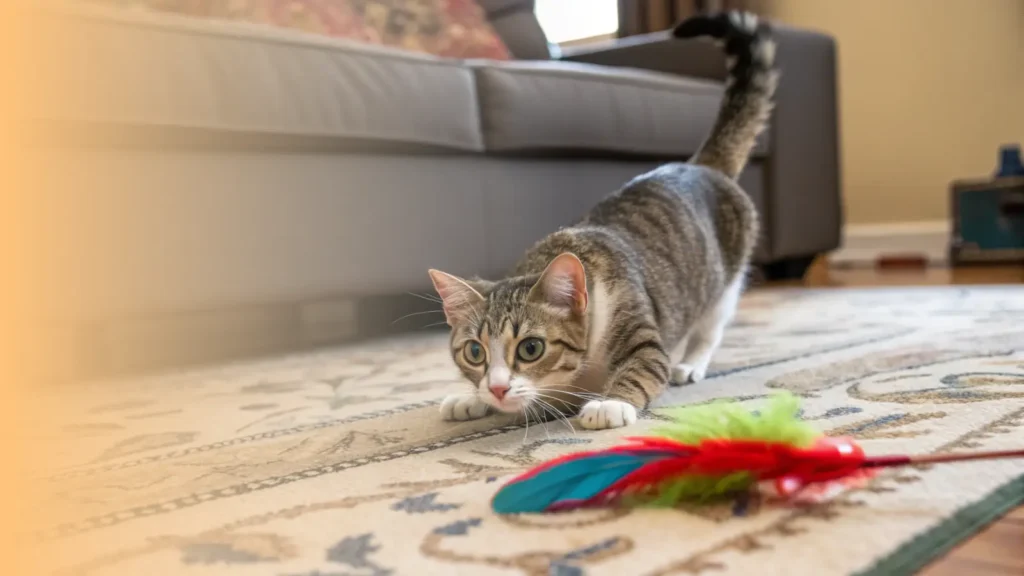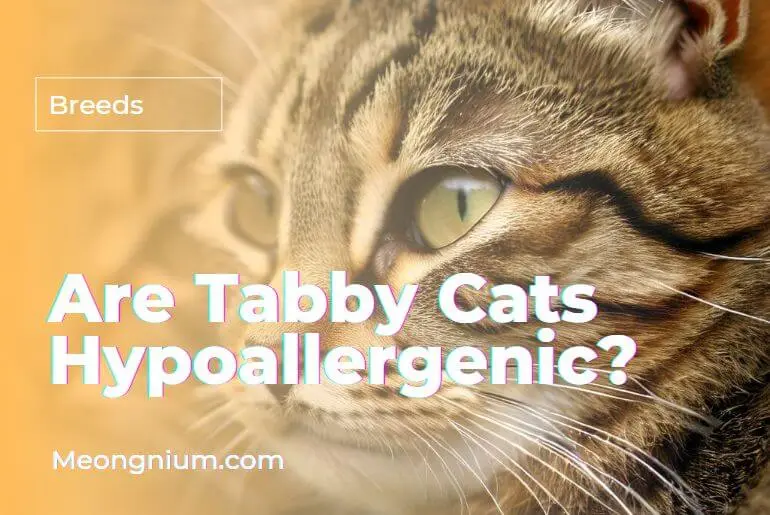There’s nothing quite like the fluid, graceful way a cat moves through your home. So when you suddenly see your cat walking low to the ground, with a slinking or crouched posture, it’s natural to feel a pang of concern. This change in their walk is often a signal that something is amiss, but figuring out what they’re trying to communicate is the real puzzle.
This low stance can mean many different things, and learning to read the subtle clues in your cat’s body language is the key to understanding if she is scared, just being playful, or feeling unwell. Let’s look at the signs together so you can figure out what your cat is telling you.
Is She Scared, Playful, or Unwell?
A cat’s crouch is a great example of how one posture can have multiple meanings. Veterinarians know that fear, a desire to play, or physical pain can all cause a cat to get low. The secret to telling them apart lies in the context of the situation and the other signals your cat is sending with her ears, eyes, and tail.
Reading the Signs of Fear or Anxiety
When a cat is frightened or anxious, her main goal is to make herself seem as small and non-threatening as possible. This is a defensive posture, a clear sign that she feels uncomfortable or unsafe. If you suspect fear is the cause, look for this combination of clues.
1. A Tense and Small Body
A scared cat will crouch low, with tense muscles that might even be trembling. She isn’t relaxed. She may also try to press her body into a corner or under furniture to find a safe hiding spot.
2. The Telltale Tail
A frightened cat’s tail is a huge giveaway. It will often be tucked tightly between her legs or held low and close to her body. If she feels particularly threatened and is getting ready to defend herself, her tail might puff up to twice its normal size.
3. Ears That Listen for Danger
Her ears will likely be flattened back against her head or turned out to the sides. They might also swivel around rapidly as she tries to pinpoint the source of the scary sound or sight.
4. Wide, Watchful Eyes
Fear often causes a cat’s pupils to dilate, making her eyes look very large and dark. Her stare might be fixed on the threat, or her eyes might dart around nervously as she assesses her surroundings for an escape route.
Spotting a Playful Stalk
On the other hand, a low crouch is also the classic first move in a playful ambush. This posture looks very different from a fearful one because the cat’s mood is one of excitement and focus, not distress. You can be pretty sure it’s playtime if you see these signs.
1. A Focused and Wiggly Body
A cat in play mode will be low to the ground but her body will be focused, not tense. The most charming sign is the famous butt wiggle she does right before she pounces on her favorite toy or a fellow furry friend.
2. An Alert Tail and Ears
Instead of being tucked, her tail will likely be held out straight behind her, with maybe just the tip twitching in anticipation. Her ears will be pointed forward, locked in on the object of her interest.
3. Eyes Locked on the Prize
Just like with fear, a cat’s pupils can dilate during play due to excitement. The key difference is the focus. Her gaze will be intensely fixed on her target, whether it’s a feather wand, a crumpled piece of paper, or your wiggling toes under a blanket.
Clues Your Cat Might Be in Pain
This is the most important distinction to make. If your cat’s low posture is not related to an obvious scare or a playful moment, it could be a sign that she is in pain. Cats are experts at hiding illness, so a change in her walk is a signal you should always take seriously.
1. A Hunched or Guarded Posture
A cat in pain often holds her body in a stiff, guarded way. She might look hunched over, with her back slightly arched and her belly tucked up. This is especially common if she has abdominal pain, a posture often called the “cat’s stomach pain position.” She is reluctant to move and does so without her usual grace.
2. Subtle Changes in Demeanor
Pain can make a normally social cat become withdrawn and hide more often. She might seem more irritable or grumpy, lashing out when you try to pet her or pick her up. You might also notice she is not grooming herself as well, leading to a scruffy or unkempt coat.
3. Squinted or Dull Eyes
Unlike the wide, alert eyes of a scared or playful cat, a cat in pain may have squinted or dull-looking eyes. They lack their usual brightness and might seem unfocused. If the pain is very severe, her pupils could be dilated, but the overall picture will be one of distress, not excitement.
If you observe these signs of pain, and they persist without any clear external reason, it is very important to contact your veterinarian. Your careful observations can provide crucial clues to help figure out what is wrong.
Final Thoughts
Seeing your female cat walk low to the ground is your cue to become a careful observer and decode what she needs from you. By paying close attention to the context and her complete body language, you can better understand if she needs space, a play session, or a visit to the vet. Your watchfulness is the first and most important step in keeping her healthy and happy.







